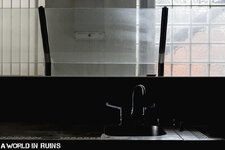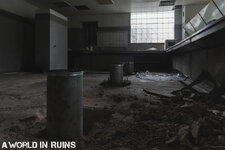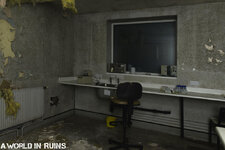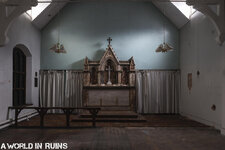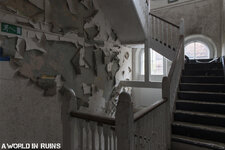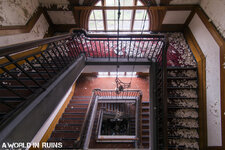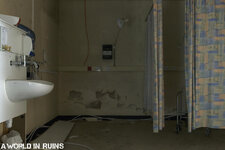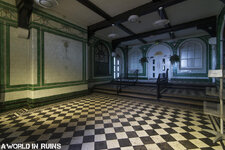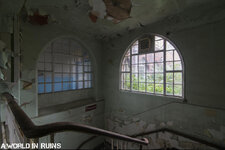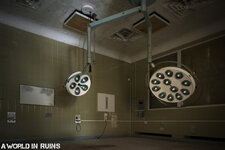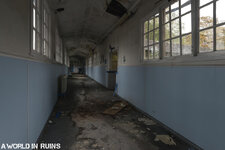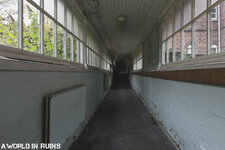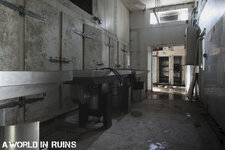First a little History [you all know it, but it's good to include anyway] ?
The Dispensary – the first public hospital in North Staffordshire – opened in Etruria in April 1804 and was funded in part by the Wedgewood family. It gave sick patients the chance to see an Apothecary for diagnosis and treatment. It also provided vaccination against the dreaded smallpox, thanks to the pioneering work of Dr Edward Jenner. Shortly afterwards the 11-bed House of Recovery was opened for fever patients, followed by facilities to treat general and accident patients.
The hospital continued to expand, due to a steady flow of general illness cases, accidents in the pottery, mining and iron industries and diseases caused by lead and dust. In 1819 it moved to a bigger site in Etruria. By this point it employed a small team of support staff, including a matron and nurses, and ran education programmes urging mine and factory owners to improve their safety standards. Thanks to new ideas about infection control, the building - surrounded by polluting factories - was increasingly seen as unsuitable for patients and was also at risk of collapse from heavy undermining. Eventually, the decision was made to move the infirmary to Hartshill. The clean, quiet suburb became home in 1869 to the North Staffordshire Royal Infirmary, which later merged with the City General Hospital to form the University Hospital of North Staffordshire – now the Royal Stoke University Hospital. Previously the hospital was known as The North Staffordshire Infirmary and Eye Hospital (1815 - 1911) as well as The North Staffordshire Infirmary (1912 - 1926).
The building closed down as a medical facility in 2012 as part of the super-hospital development at the Royal Stoke University Hospital.
The explore: Visited with David [ Scrappy ]. It rained, a lot. ?
The morgue was a bit of a let down as the slabs had recently been removed and placed in a nearby corridor in front of the fridges. Oh well....
On to the photographs, hope you enjoy:













The Dispensary – the first public hospital in North Staffordshire – opened in Etruria in April 1804 and was funded in part by the Wedgewood family. It gave sick patients the chance to see an Apothecary for diagnosis and treatment. It also provided vaccination against the dreaded smallpox, thanks to the pioneering work of Dr Edward Jenner. Shortly afterwards the 11-bed House of Recovery was opened for fever patients, followed by facilities to treat general and accident patients.
The hospital continued to expand, due to a steady flow of general illness cases, accidents in the pottery, mining and iron industries and diseases caused by lead and dust. In 1819 it moved to a bigger site in Etruria. By this point it employed a small team of support staff, including a matron and nurses, and ran education programmes urging mine and factory owners to improve their safety standards. Thanks to new ideas about infection control, the building - surrounded by polluting factories - was increasingly seen as unsuitable for patients and was also at risk of collapse from heavy undermining. Eventually, the decision was made to move the infirmary to Hartshill. The clean, quiet suburb became home in 1869 to the North Staffordshire Royal Infirmary, which later merged with the City General Hospital to form the University Hospital of North Staffordshire – now the Royal Stoke University Hospital. Previously the hospital was known as The North Staffordshire Infirmary and Eye Hospital (1815 - 1911) as well as The North Staffordshire Infirmary (1912 - 1926).
The building closed down as a medical facility in 2012 as part of the super-hospital development at the Royal Stoke University Hospital.
The explore: Visited with David [ Scrappy ]. It rained, a lot. ?
The morgue was a bit of a let down as the slabs had recently been removed and placed in a nearby corridor in front of the fridges. Oh well....
On to the photographs, hope you enjoy:
